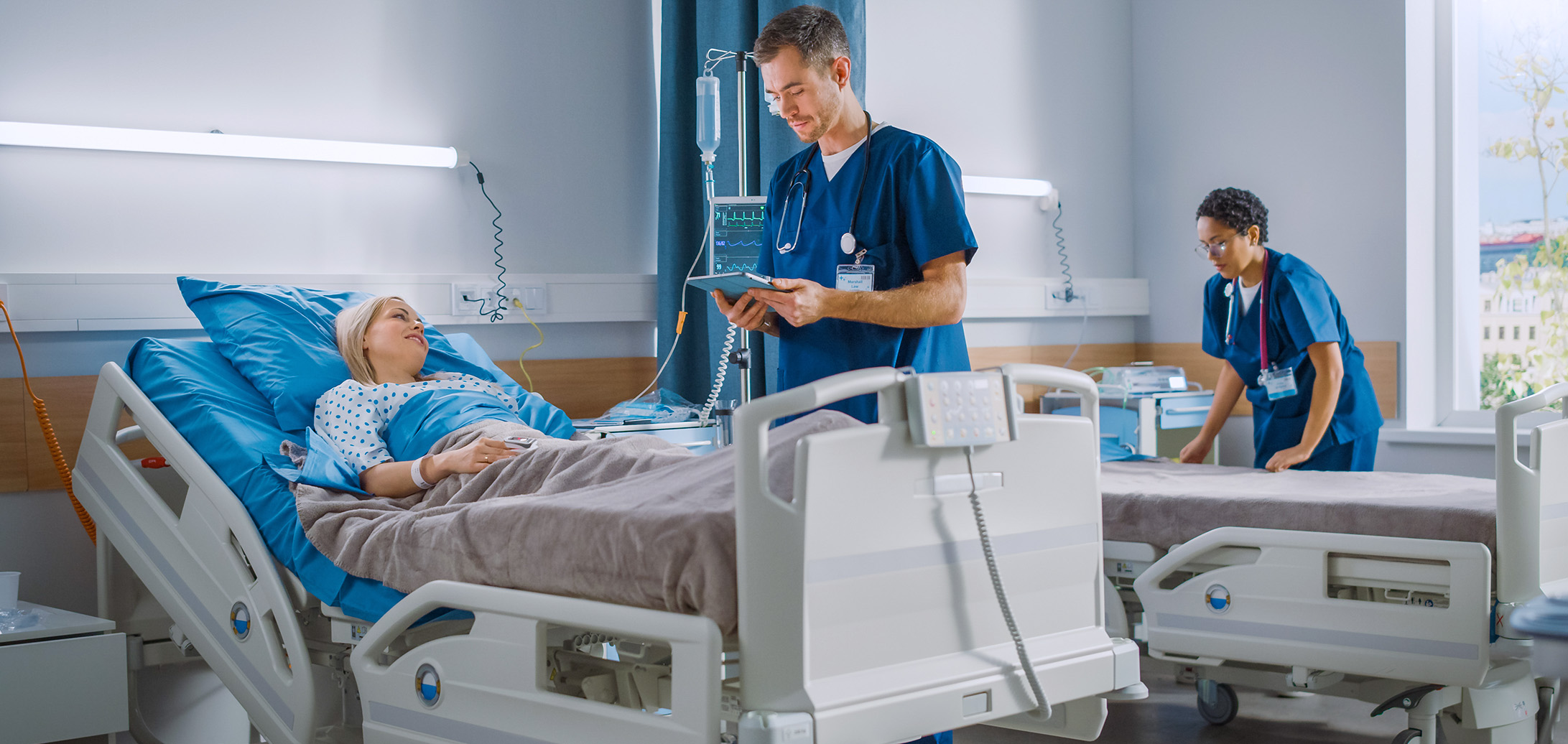Inpatient and Outpatient Safety 101

When patients are receiving treatment at a hospital or doctor’s office, the goal is obviously to improve their health or even to save their lives. However, there are risks to receiving treatment, and patients sometimes get worse, not better due to safety issues that frequently occur. Some of these events can ultimately lead to a patient’s death or affect their long-term well-being.
According to the World Health Organization (WHO), approximately 1 in 10 patients in high-income countries are harmed due to the care they receive while in a hospital. That’s bad enough, but the WHO also estimates that about half of those adverse events are preventable. Medical professionals are often overworked and stressed, but patient safety must always be the top priority.
The risks that patients might face vary depending on the type of treatment they’re getting and whether they are receiving inpatient treatment or outpatient care. It’s important for all medical personnel to be aware of these safety risks and to take steps to prevent them. Here’s what you need to know about the basics of safety for inpatient and outpatient care.
Infection is a Major Risk for Patients
Patients who are undergoing either inpatient or outpatient surgery are susceptible to infection. While it’s not always possible to prevent infection, there are important steps staff members must take to greatly reduce the incidence of infection. Some of these steps include:
- Appropriate hand-washing
- Following appropriate instrument and equipment sterilization protocols
- Using personal protective equipment, such as gloves and masks
- Handling and disposing of sharps appropriately
- Following safe injection practices
- Maintaining high levels of general cleanliness
Infection is also a risk for patients who receive inpatient surgical care. Their care team should take all the same precautions and advise them on proper at-home care to prevent infection.
Slips and Falls
Patients often suffer from falls, especially when they are receiving inpatient treatment. Getting up from bed is always a risk for those with mobility issues or conditions that affect their ability to stand and walk normally.
All patients should be evaluated for their fall risk in order to implement preventative measures that are appropriate for the individual. Simply giving a patient a wristband that indicates they are at fall risk is not enough, and even bed alarms have shown minimal effectiveness in preventing these kinds of accidents.
Giving patients the mobility equipment and physical assistance they need is important for reducing falls. Staff should also ensure that there are clear paths for patients and minimal clutter. Some patients fall because they cannot see or hear effectively, and ensuring that any vision or hearing aids are within reach can help.
Medication and Treatment Errors
One of the biggest safety risks to patients is medical errors. These can occur due to doctors or nurses not following proper procedures and cutting corners, but they can also involve patient mix-ups and medication errors.
Preventing medical errors starts with good health record management. Providers should not have multiple patients’ records open at once to help prevent errors. It’s also important for doctors and nurses to use multiple patient identifiers to ensure that they are providing medication, treatment, or testing to the correct patient.
Clear communication is essential for preventing errors like performing surgery on the wrong body part. Before performing any procedure, taking extra caution to confirm the care plan can require a bit more time, but might also prevent a disastrous error.
Communication must be clear between providers, staff, patients, and family members to reduce the potential for errors. All members of staff must feel empowered to speak up if they witness an error or have doubts about a patient’s identity.
Medical errors can be deadly, and they can increase when healthcare providers are tired or chronically stressed. Smart scheduling and ensuring that providers get adequate rest is important, whether they’re working with patients on an inpatient or outpatient basis.
There’s a Difference Between Safety and Quality
It’s important to note that safety and quality are not the same thing. Safety measures the care that’s taken to prevent adverse events and reduces the chances of mistakes. Quality of care is important too, but it has to do with the patient’s overall experience.
Healthcare providers must put safety first, but it’s only the foundation of providing high-quality care. Taking the care experience a step further, whether in an inpatient or outpatient setting, raises the bar and helps patients enjoy better outcomes overall.
Investing in Patient Safety is a Win-Win
Preventing safety issues in a medical facility takes extra time and diligence, which can be costly. However, the costs of a safety issue occurring can be much, much higher. Investing in patient safety isn’t just the right thing to do, but it can also pay for itself in terms of a facility’s reputation and in preventing malpractice lawsuits.
Strong patient safety protocols are important, and they represent a win-win for patients, providers, and administrators. When we all work together to provide safer care, many tragedies can be prevented.
![]()
